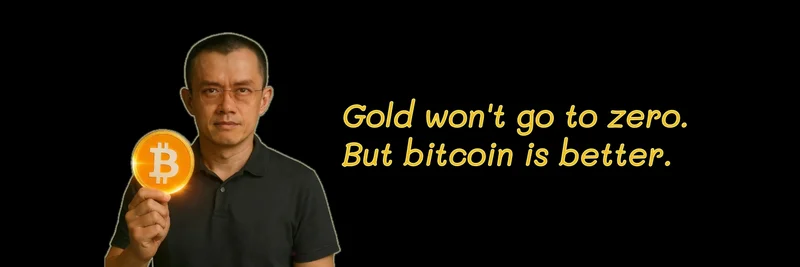TL;DR
- The BNB Chain token at 0x180adfd4d4ab118c4c1a482134bd79351dcb4444, referred to as “Aurabit,” has limited or no publicly indexed data on major explorers at the time of research.
- Multiple unrelated entities and similarly named tokens (“Aurabit,” “AuraBit”) exist, creating name collisions. Always verify the exact contract address before interacting.
- If you’re evaluating this token, start with contract-level checks on BscScan and use reputable dashboards to assess liquidity, taxes, and potential risks.
- For discovery, analytics, and trading workflows, you can review this token on GMGN.AI. If liquidity exists, you may also route via BNB Chain DEXs like PancakeSwap by pasting the exact contract address.
What we could verify (and what we couldn’t)
Our checks did not surface a clear project page or active profile on major public sources linked directly to the contract 0x180a…4444. That usually points to one of the following:
- Very low on-chain activity or a dormant contract.
- A token that has not been marketed or indexed widely.
- A mismatch between the community name (“Aurabit”) and this specific address.
Separately, we found:
- “Aurabit Capital” (a trading/quant fund) that is not a token project tied to this address.
- “AuraBit” (a design/dev services outfit), which is unrelated to a crypto token.
- Other tokens labeled “Aurabit” on BNB Chain with different contract addresses and sporadic activity. These are not the address in question.
The takeaway: don’t rely on name alone. Treat “Aurabit” as a label that multiple parties may use and verify every interaction by contract address.
A practical checklist to verify this token
Before you trade or approve anything, walk through these steps:
- Contract identity
- Search the exact address on BscScan.
- Check whether the source code is verified, whether it’s a proxy, and if ownership is renounced.
- Review contract functions for mint, blacklist, pause, maxTx/maxWallet, and tax logic.
- Holders and distribution
- Inspect top holders. Excessive concentration, especially in externally-owned accounts (EOAs), can imply high dump risk.
- Review deployer/owner wallets for suspicious activity (repeated liquidity pulls, aggressive mints).
- Liquidity and markets
- Use GMGN.AI’s token page to check live pairs, liquidity, price action, and trading flags.
- Cross-check pairs you see against DEX analytics (for example, PancakeSwap’s interface by pasting the contract). Only interact with the exact 0x180a…4444 address.
- If no active pairs or very thin liquidity are visible, avoid market orders and be cautious with slippage.
- Safety screens
- Look for honeypot symptoms: can you simulate a small buy and sell? Is sell tax abnormally high? Are transfers restricted?
- Confirm trading is actually enabled (some tokens block sells at launch or after migration).
- Review any timelocks or multi-sig protections on liquidity and key parameters.
- Off-chain footprint
- Official website and socials (if any): do they resolve to consistent, long-lived domains? Are team claims verifiable?
- Audits or KYC? Treat unaudited contracts as high risk, especially in meme markets.
- Wallet hygiene
- Avoid blanket approvals. Use spend limits and revoke allowances frequently.
- Test with a small amount first; set tight slippage and confirm gas/tax estimates.
Where to check trading and liquidity (and how)
- GMGN.AI: For a consolidated view of pairs, price, and smart-money flows, start with the dedicated page for this contract: https://gmgn.ai/bsc/token/fV1R5sZ5_0x180adfd4d4ab118c4c1a482134bd79351dcb4444.
- PancakeSwap: If—and only if—liquidity exists for this exact address, you can paste 0x180a…4444 into the token selector to trade. Double-check pair addresses and start with tiny test transactions.
- Charting/discovery: Platforms like DEX Screener and similar tools can help validate that the pair you’re seeing corresponds to the exact contract.
Tip: If a platform shows an “Aurabit” with a different contract address, it’s a different token.
About GMGN.AI (tooling you can use)
For meme-token discovery and risk checks, GMGN.AI offers:
- Cross-chain meme token tracking and trading across Ethereum, Solana, Tron, Base, and Blast.
- Smart money tracking to follow notable wallets and spot early flows.
- Automated trading to mirror strategies from successful wallets (requires linking a Telegram account via https://t.me/gmgnaibot?start=i_fV1R5sZ5).
- Built-in security checks to flag honeypots, high taxes, and other red flags.
You can open the Aurabit contract’s page directly here: GMGN.AI – Aurabit on BSC.
Red flags to watch for on any meme token
- Unverified or mutable contract with owner-only functions that can block sells or mint at will.
- Liquidity that’s unlocked, tiny, or repeatedly pulled and re-added.
- Socials created very recently with recycled imagery or broken links.
- Zero communication about taxes, trading status, or roadmap.
- Name collisions that try to piggyback on unrelated brands or funds.
Bottom line
At the time of writing, the contract 0x180adfd4d4ab118c4c1a482134bd79351dcb4444 lacks clear, verifiable public context beyond its on-chain existence. That doesn’t automatically make it malicious—but it does mean you should proceed with extreme caution. Validate everything by contract, not by name; confirm liquidity before trading; and use risk tools and small test orders if you choose to engage.
Resources to keep handy:
- Contract on BscScan: paste the exact address into bscscan.com
- Discovery and trading workflow: GMGN.AI token page
- DEX access: PancakeSwap by contract paste (only if verified pairs exist)



